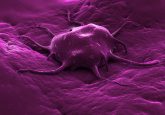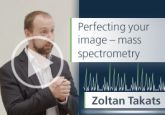NMR agent demonstrates sub-picomolar sensitivity
A group of scientists have recently published their research on a new contrast agent for use in Xenon NMR. The agent is based on ‘surfactant-stabilized perfluorocarbon-in-water nanoemulsions’; and allows the free exchange of xenon molecules between the solution and the nanoemulsion interior. This means that detection of the agent can be based on chemical exchange saturation transfer (CEST).
In their paper, the team explains that nanoemulsion droplets between 160 and 310nm were synthesized. These were then characterized; with droplets detected at concentrations as low as 100fM. The authors explain that since the agents can be produced relatively inexpensively, the agent has promise in various applications.
Speaking to Bioanalysis Zone, Co-author Todd Stevens (Robarts Research Institute at Western University, London, Ontario, Canada) commented instead of: “The sensitivity demonstrated by the nanoemulsion-based hyperCEST agents is approaching that of optical-based techniques, which may open up new applications in which chemical or biological characterization of opaque samples is required.” Stevens explained that applications for such a system and continue this research: “crude mixture analyses involved with biofuel productions” and “molecular recognition of microscopic cell populations for early cancer detection.”
Stevens described the team’s plans to continue this research: “Future work will include optimizing the structure and xenon exchange dynamics of the nanoemulsions, and generating the first targeted versions of the agent for select binding systems.”
Source: Stevens TK,Ramirez RM,Pines A. Nanoemulsion Contrast Agents with Sub-picomolar Sensitivity for Xenon NMR J. Am. Chem. Soc. 135 (26), 9576–9579 (2013).




